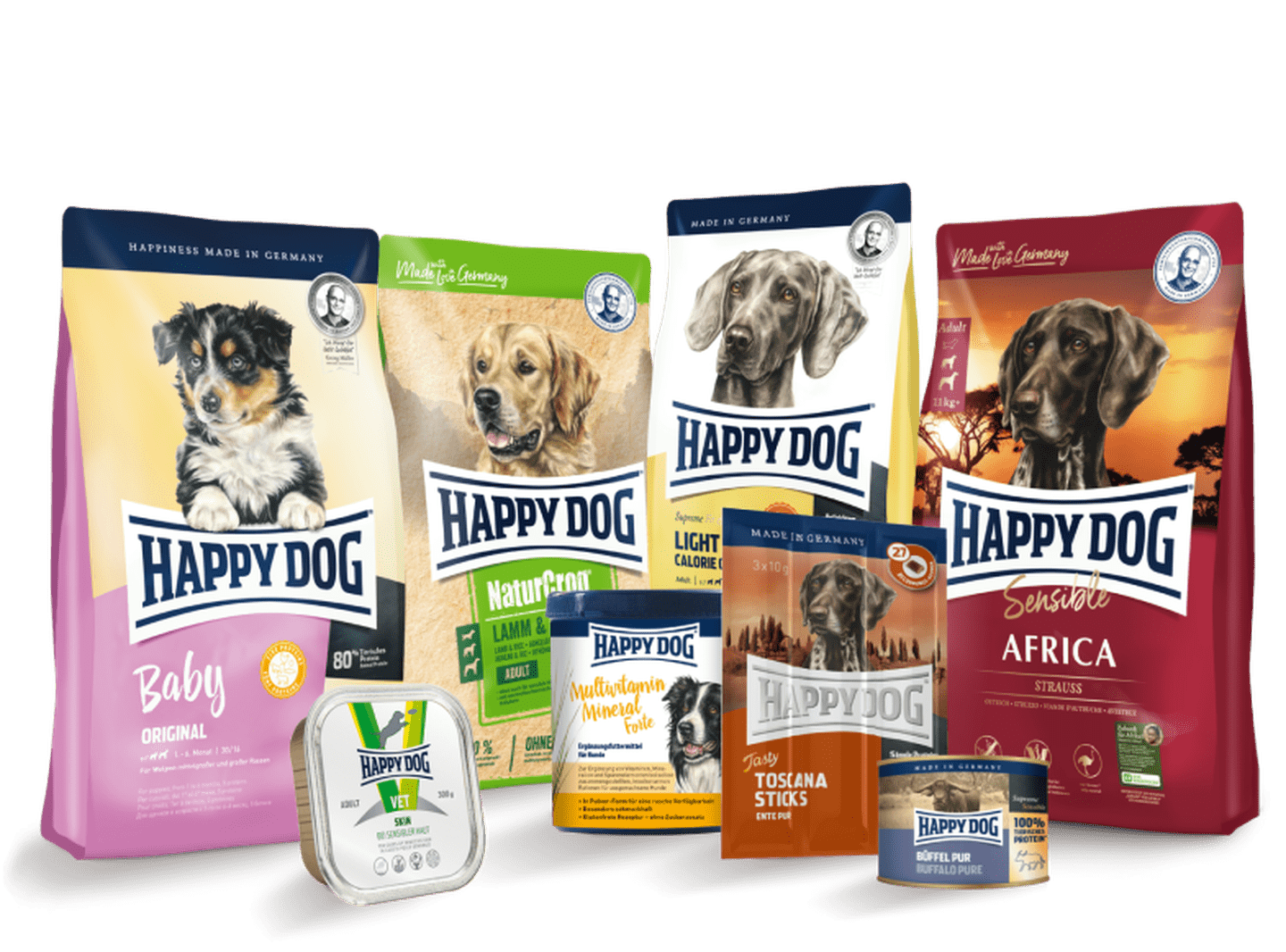For dogs to correctly use the nutrients that their body absorbs from the food they eat and to ensure that waste is gently eliminated from the body, the internal organs need to work in close coordination. Read how your pet’s digestive system works.
Understanding dog digestion
Canine digestion today
1. The stomach
The stomach lining contains three different types of gland, which produce and excrete digestive secretions, hydrochloric acid and mucus. The mucus prevents the stomach “digesting itself”. In the stomach, this pulp is thoroughly mixed with the important secretions. Then it passes to the small intestine.
2. The small intestine
The small intestine is made up of three different sections; The duodenum, jejunum and ileum.
In the duodenum, bile from the gall bladder is added. The bile neutralises the stomach acids and has the task of binding the fat and preparing it for digestion.
The jejunum is where the pancreatic enzymes enter the food bolus. They ensure that the bolus can be digested.
The ileum is where the food is absorbed into the blood steam.
3. Appendix, large intestine and rectum
After the small intestine, the bolus passes the appendix, which is largely redundant in dogs. In the large intestine the water is removed from the bolus and stools are formed.
Not all food particles are digestible, such as plant fibres. But they still play a very important role for the intestine. Roughage helps the food move through the intestine and prevents constipation.
Digestibility explained
Digestibility and the optimum energy content are important for metabolism
Metabolism is the process by which the dog’s body absorbs nutrition and converts it to a form that can be used by the body. For the metabolism to work as effectively as possible, it is important for the food to be well digested. A high quality food will ensure this and will also deliver the amount of energy that your canine friend needs.
This is known as high digestibility
You can tell when a food is highly digestible because your dog will be satisfied with smaller portions and will excrete smaller stools with a firm consistency. Happy Dog products are up to 90 % digestible. And this is important. A drop of just 7.5 % in digestibility (i.e. 82.5 %) will double the volume of faeces!
Without energy nothing works in the body
Your dog needs to consume sufficient energy. How much depends on the dog's level of activity, age, type of coat, and many other factors.
Energy maintains the body temperature, helps the breathing, keeps the circulation going and allows the muscles to move. The best sources of energy are fats and carbohydrates, but one gram of fat provides almost double the energy gained from one gram of carbohydrate. In addition, animal fats have a higher energy content than vegetable fats.
There are situations where more energy is needed, particularly in growing puppies, pregnant and lactating bitches or dogs after a long period of serious illness. Dogs who actively participate in agility and other sports or dogs who live outside in kennels often need special food with a higher energy content. Any change in diet should first be discussed with your veterinarian.
Important organs
Pancreas
The pancreas produces a clear, watery liquid with a high sodium bicarbonate content.
Sodium bicarbonate is a base and therefore able to neutralise (“buffer”) the acidic digesting food from the stomach. Pancreatic secretions contain the most important enzymes needed to digest protein, fats and carbohydrates, specifically trypsin (breaks proteins down into amino acids), lipase (breaks fat down into fatty acids) and amylase (breaks carbohydrates down into “simple sugars”).
This takes place in the first section of the small intestine. Regulation of the blood sugar level is guaranteed by provision of the hormone insulin.
The most common disorders of the pancreas are pancreatitis (inflammation of the pancreas) and dis- orders of the digestive enzymes (exocrine pancreatic insufficiency). A disruption to the production of insulin (endocrine pancreatic insufficiency) can lead to diabetes (diabetes mellitus).
Liver
The liver regulates nutrient levels in the blood. Its main functions are retaining nutrients, storing and breaking down carbohydrates, proteins and fats, detoxifying breakdown products from the intestinal tract and producing bile acids. The liver is also tasked with separating out metabolic products and toxins. One feature of the liver is that it is generally able to regenerate very quickly, and any damage it sustains is usually only temporary.
Note: however, that up to 80 % of the liver’s cells may be damaged before any impairment of function becomes noticeable.



